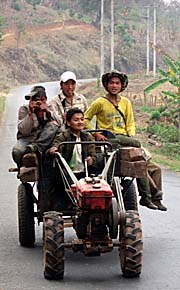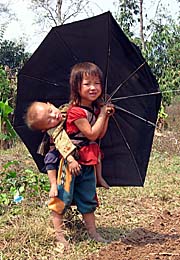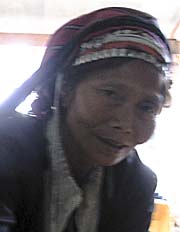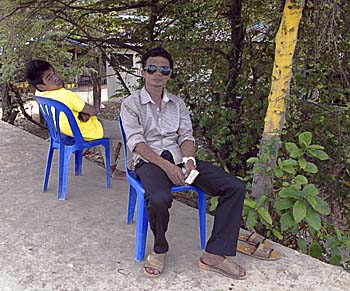1.
The People of Laos
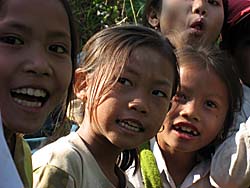
Hmong children in a remote village without road connection around Nong Kheow, north Laos. Image by Asienreisender, 2006
There is no easy approach to the People of Laos, for the huge ethnical diversity. Since the 6,200,000 inhabitants (2010), of whom some 60% are ethnically different from the Laotians (the largest ethnic), are falling apart into 70 - 120 different languages, of whom some are not yet scientifically explored; well, there is much to say on this topic. But that would lead astray here.
Laos is a country where many 'hill tribes' live, the nomadic people who live in the mountains appart from the civilizations of the plains. Generally spoken, the linguistic families can be clustered into four main groups. It's the Tai (Thai) family, the Mon-Khmer family, Tibeto-Burmese and Hmong-Yao languages. Just to make it simple.
The countries official language, Laotian, is a Tai language, pretty similar to the Thai which is spoken in Thailand. Besides, there are some 20 million Thai People in the northeast of Thailand (Isaan) and the north of Thailand who speak despite the 'Thaiification' effords of the past, rather Laotian Tai than the standard Thai language.
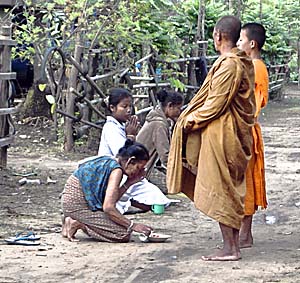
The traditional alm's collecting of the Buddhist monks in the early morning still happens everywhere in Laos. It's mostly done by women. Here in Don Khone on the 4000 Islands / Si Phan Don. Image by Asienreisender, 2013
Still not everybody in Laos speaks the Laotian language. But due to the expansion of infrastructure, the media, domestic migration and pressure from the central government the penetration of Laotian into the population is advancing.
As in Thailand the dominant religion is Theravada Buddhism. Although the governmental regime is a Communistic and therefore per ideology strictly non-religious, religion plays a very important role in the life of the Laotian People. It's richly intermixed with animism and ancestor worship.
By the way, the vast majority of Laotion People does not live in cities, but in rural communities. The countries capital Vientiane counts 600,000 inhabitants and is by distance the biggest city of Laos. It's followed by Pakse (88,500 inhabitants), Savannakhet (66,600 inhabitants) and Luang Prabang (47,500 inhabitants). Alltogether less than a fourth of the population lives in cities.
